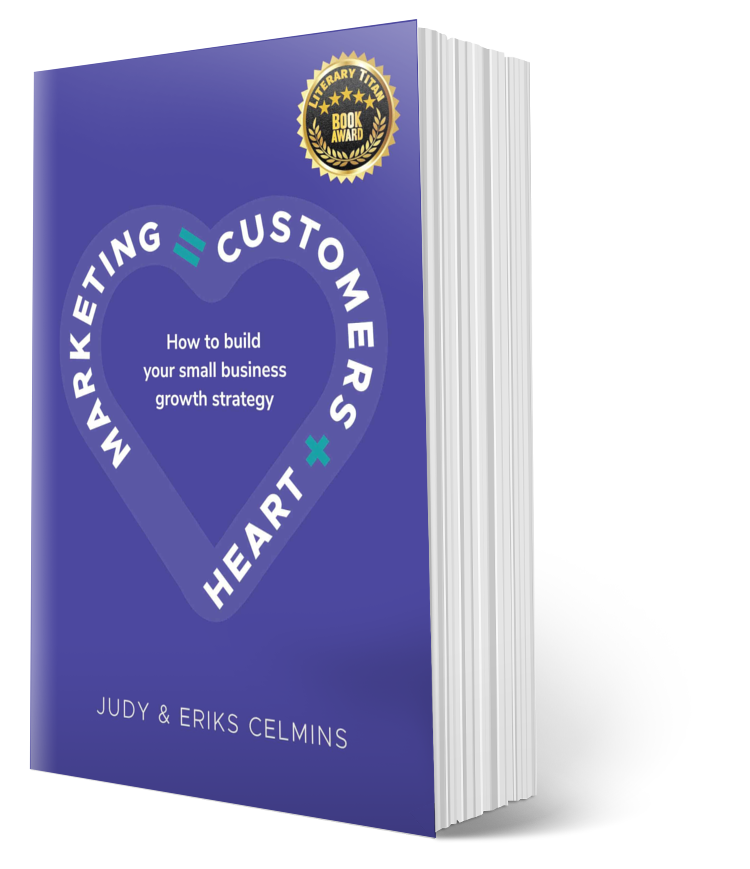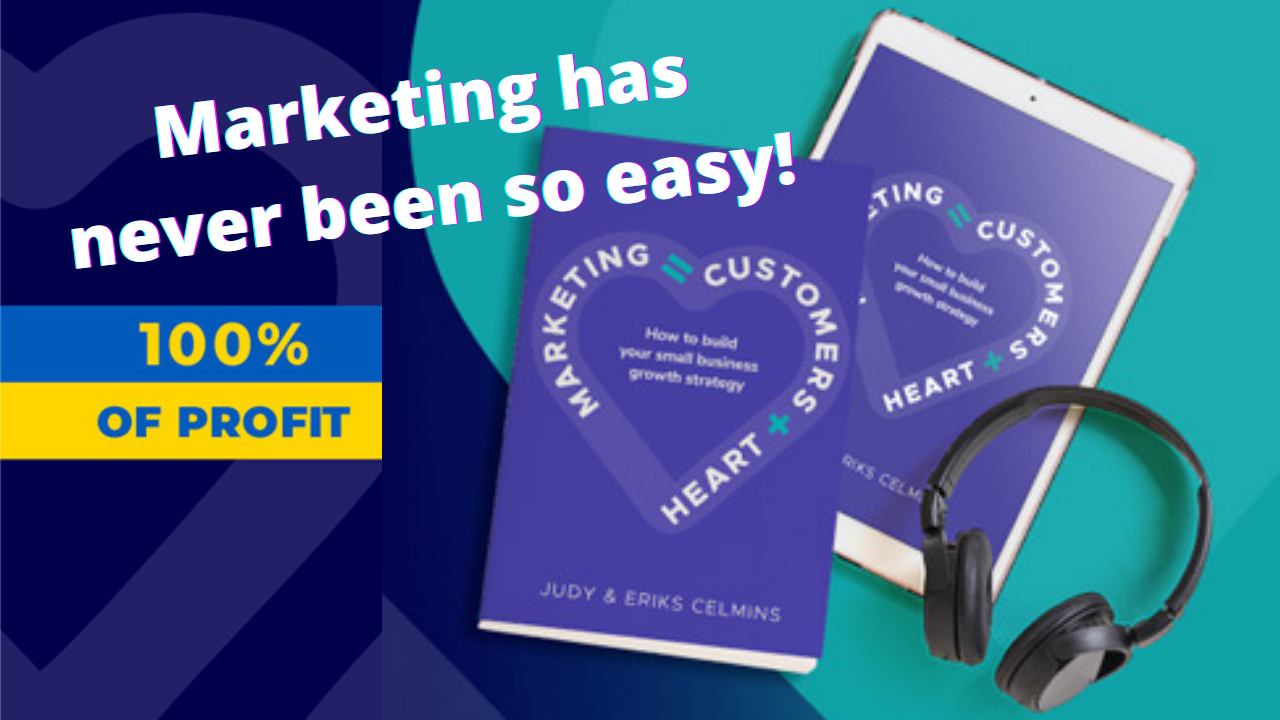If you put more energy into the planning of your new small business, you’re less likely to fail. So, learn from those before you, so you don’t make the same mistakes.
I’ve been mentoring a lovely young mum, helping her with her 15-month-old business. She is a delight to work with, committed, diligently working into the night after the children are in bed to get her business off the ground.
My role as her volunteer mentor, is to review where she’s at, and make suggestions on how she can move forward. But it all came crashing down once she sent me her end-of-financial-year figures.
She hadn’t taken a wage during the 15 months, but was able to pay back the small amount she borrowed to get her off the ground. The problem was no money left in the account to buy more stock.
She’d made some mistakes with past stock, which meant all her funds were tied up and she couldn’t sell them.
Or there was the couple that were so passionate about their idea, just knowing in the gut that it would work. No need to conduct market research of any type. They invested heavily developing their product, all to discover that there weren’t enough people interested in buying it to make it work. As a mentor, there’s nothing I can do at that stage.
So many I talk to have a skill; be it a graphic artist, digital marketer, interior designer, the list is endless. And all of them think they can just advertise their service, stick a sign on the front gate and business will flock in. Umm, probably not.
I could go on and on, but I don’t want this to be all doom and gloom. Every successful business started from an idea at some point.
The purpose of this article is to share some of the things I’ve learnt over 30 years of owning and mentoring small businesses.
I’ve also read many blogs and papers on small business failure. But they tend to look at the larger issues of management, growing too fast, lack of succession plan, and the biggie of cash-flow.
Out of those, the only one that relates to your early start up is cash-flow and it’s something I found most don’t understand enough, so I will cover that below.
So let’s get into this…
You’ve got an idea you reckon will work.
Awesome, that’s a great start!
It’s not easy to cover every scenario in this blog post, so for this exercise I’m going to assume it’s an idea based around a skill you have. And what I’m going to do is challenge your thinking with some key questions.
Hungry for more? Marketing = Customers + Heart is your road map to building your growth strategy.
8 Key Questions That Will Boost Your Small Business
1. What makes you different?
Let’s pick graphic artists as an example. Do an online search for graphic artists in your area and have a look at their websites. Just by glancing at their site, what makes them different to the next one you find?
Nearly always they have the same looking site design, with thumbnails of their work you can click into. Some have a motivational statement about “why choose them”.
Now, for each site you land on, write down what jumps out at you - are there elements that look interesting, that inspire you to look further?
Doing this exercise in an unrelated product category to you, is a good way to point out how hard it is to stand out and be different.
You might tell me that you don’t need a website - that you’ll be selling directly to existing contacts or at the local market. That’s all fine, but you still must have a point-of-difference. And I would argue that you really do need some way of connecting digitally and sharing your story.
Walking through a shopping area recently, I noticed 3 cafés almost all next to each other. I stood back and just observed. In reality they all looked the same, they all did what you’d expect from a café, and were no doubt competent. But what was special about them?
You have to stand out. You have to be different, otherwise what’s the point?
So, write down what makes you different…
2. Who else offers a similar solution?
I’ve lost count of the number of people who tell me, they are the only one in their space. Well, if that’s true, and it almost never is, then being the only has its own challenges, which I don’t have the scope to go into here.
A client of mine recently told me he didn’t have any competitors. It took me only 5 minutes of online searching to find a pile of alternatives. What he was really saying was, “no one does it the same way I do.” And that’s a good thing, provided people want what you’re offering!
Let’s say you’re a fabulous cook, and you have a secret recipe… “Wow, you should sell this!” And you might well be able to. There’s a Christchurch woman selling really yummy brownies, called Badass Brownies. I don’t know her business, other than it’s an awesome name, and I’ve had the pleasure of eating one at a farmer’s market.
But I wanted to use her as an example of crowded competition i.e. anyone who sells food, any bakery or café. People could satisfy their brownie-craving at the supermarket. The point is there are lots of competitors that solve that need, but she is carving out her niche and memorable brand personality.
So who are your competitors?
3. How are customers currently solving the problem?
If your business aims to solve a problem customers currently have, then chances are they’ve already found a solution. It might not be perfect, but it does the job.
Understanding that helps you firstly clarify the need for your product, while also highlighting the challenges in redirecting them to your (superior) alternative.
There’s a scene in the TV series Mad Men where the lead character, Don Draper, is having a conversation with the waiter, and asks him, “If you couldn’t get your favourite brand of cigarettes, what would you do?” The reply, “I’d have to find something else” You can watch the scene here.
The point is, if customers have a need, then they’ll find a near-enough solution. Knowing that, helps you in your marketing strategy. As every bit of market intelligence you gather makes it easier to shape and present your offering.
Spend some time now and lay out How & What people currently do to solve the problem.
Take your blinkers off, you need to realistically think of how people currently fulfill their need.
4. Do customers need YOUR solution?
Of course it’s abundantly clear to you that your idea solves a problem. But in many cases customers are happy with the current solution.
This happened with a tech start-up I was involved with. We had a superior product, (based on customer feedback), we were cheaper, faster, and easier. But when it came to the crunch people were habitual (our brains are wired this way), and didn’t feel compelled enough to change.
You have to understand the customer’s problem in detail. Then do your homework on whether they really need your solution compared to what’s already available. Be prepared to let go and pivot your brainchild to another type of offering.
Mobile computer repair is a good one. Many people in our community need help with their tech and don’t have the ability to load it in the car and find someone.
Offering that option in an area that isn’t currently serviced makes sense.
But let’s say you want to start a lawnmowing business and your area is full of high-rises. OK, that’s a silly example, but you get the idea.
Years ago, I started a pet shop in the lower North Shore of Sydney. The first thing I commissioned was research into the area. Did people have a need for a pet shop? The answer was yes after an early, overnight pivot from my first idea.
Whatever your idea, it has to solve a problem for people. What’s the problem you solve?
5. How many people in your area are interested in your product/service?
This is a large topic. In fact I’ve created a detailed Workbook as part of a separate course to cover just this alone, it’s that big.
But in summary, what you need to know is how many people will buy from your business, and at what stage.
What I mean by that is that some people are happy to buy from new businesses - others like to see how you go and wait till you get some testimonials. Just like when job-hunting, people are reluctant to employ someone without a track record.
Let’s use computer repair again as an example. You can search online and find out how many households have a computer.
Then drill down - are you servicing a specific age group? You might start by targeting older people. Whatever your niche, keep probing away till you identify how many people you can viably service.
6. Can I replace my day job?
If you have a day job, then I strongly recommend you work on your business after-hours. Having the security of a regular income makes everything that much easier.
If it’s the type of business that requires you be available during business hours, then please, do all the homework you can first. Get everything set up before you resign.
You should have a detailed understanding of your target market, what motivates them, their needs, and how they are currently solving them.
7. Pricing
There are different pricing formulas for different business models.
To arrive at your retail price you first need to know how much it costs you to buy or develop the product. Once you have that you add your mark up, usually around 100%.
But that’s just touching the surface of a massive topic. If you’re got to this stage I found this great blog on how to structure your pricing, you can check it out here.
8. Cash-Flow
And the big sticking point for many businesses is cash-flow. Which basically means money coming in and money going out.
Each month you will have fixed and variable expenses. Even if you are funding it via savings or your regular job, understanding the in & out of the funds is critical!
The way I like to do it is document everything you will ever need in your business - cover electricity, rent, fast-internet, website, any tools, and the annual costs like insurance and accounting. Plus also consider new equipment like a new computer etc.
What you do is off-set that against your guesstimated income. Yes, in most cases it’s a calculated guess. But based on all the homework you’re done above.
There are plenty of free cash-flow templates online so just do a search for one that works for you.
The thing I like to do, that many templates don’t include, is an ‘Actual’ column next to your projections.
Then each month of trading, enter what you actually spent and your actual income. Then if needed adjust the cash-flow going forward.
It’s a trap many fall into. You keep spending, thinking the next month sales will pay for it. Or you’ve miscalculated your cost of goods, so your profit margin isn’t as healthy.
Hungry for more? Marketing = Customers + Heart is your road map to building your growth strategy.



